1. Vision and Strategy
Defining what it is you’re trying to build & how you’ll get there
Business models map out all the components that will be required to build your product for your customers, and different revenue models for capturing value. Competitive analysis in terms of building an understanding of different products that are out in the market, and how your product compares to them. MVP minimum viable product, the simplest product you can get to market the fastest, and KPI’s, Key Performance Indicators; how do you measure your progress and success?
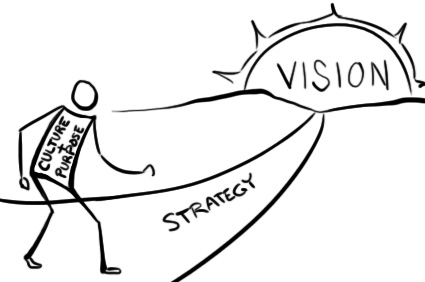
- Vision
- Strategy
- Business models
- Competitive analysis
- MVP
- KPI’s
Vision
Vision and what it entails. Vision describes what your product will look like in its final state. It explains the essence of your product, what your product will do and why it matters to your users. The vision should be able to be summarised in a sentence or two with an ambitious goal.
Google WiFi vision – “A wireless access point that people love.”
This is a simple and powerful vision and it was something that guided every single decision as they built the product.
Vision is more than just coming up with a sentence or two
You need to do the work to create a compelling story that answers what you’re building, who it’s for, and why it matters. You’ll need to leverage a lot of the research and insights that you’ve already done in order to do this.
- What you’re building
- Who it’s for
- Why it matters
Remember keep the vision high level. You don’t need to get into the details of exactly what it’ll look like. Focus on what it will do at a high level – A wireless access point that people love.
Why vision matters?
- Gets the team excited and motivated about building the product
- Serves as a North Star for guiding the team and decision making as your product is being developed

As the North Star, everything that you do should trickle down from your vision. This includes strategy, which is about how you’re going to get to your vision, and the features that are on your roadmap. Because vision will impact every single aspect of your product. It’s important to be thoughtful when you’re crafting your vision.
Strategy
Strategy is really about how you get to your vision. Strategy is about how to turn your vision into reality. When building strategy there are many factors you need to take into account, such as user needs. It’s really important that you understand:
- Who is your target user
- What are their needs – that could be solved by your product
- Key features
- Competitors and differentiation
- Business Goals
- Trends
Key Features
Spend time thinking about what’s the right mix of features and functionality the will meet your users needs and create value for them?
- What are the key primary features that solve the users need?
- Will these features result in people using your product?
- Will these features convince people to buy your product?
Competitors and Differentiation
Understand competitors and how your product can be differentiated is also important. This means understanding on a deeper level what are competitors doing and how is your product different from those competitors?
- How does your product compare to others on the market?
- What areas do you want to differentiate in?
Business Goals
It’s important to understand how your product can help to achieve business goals. You have to understand what are the needs and goals of the company. This is usually related to revenue, but not always. The other important thing to think about is how can you measure these goals?
- What are the business goals for this product?
- What KPIs can you use to measure these goals?
Trends
It’s important to be aware of and understand trends. For example, how is the market changing over time, and how are user behaviours and needs changing over time?
- How is the market changing?
- How are user behaviour and needs changing?
Business Model Canvas
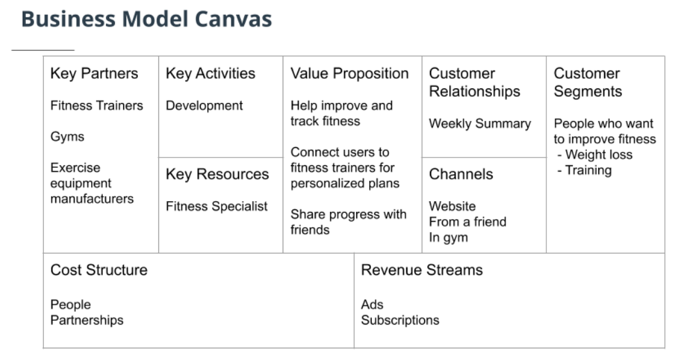
- Customer Segments – The product is for people who want to improve their fitness. Specifically the focus is on people with goals around weight loss, or training to compete in a competition, like a marathon.
- Value Proposition – The core value prop is to help users improve and track their fitness over time. Specifically we can help users improve their fitness by connecting them to a virtual trainer who can help to customise workout plans. Also creating a feature that allows users to track and share their progress with friends.
- Key Activities – Because this is an app and not hardware, the key activity to build this product is software development.
- Key Resources – A fitness specialist needs to be on the team, who can help the team understand the science behind different types of exercises in order to achieve certain fitness goals.
- Key Partners – Needs to include fitness trainers who will be matched to paying users in order to provide tailored coaching. There is an opportunity to partner with gyms where you could be matched to a trainer. Additionally there is also the potential to build integration with some exercise machine manufacturers – this would make it much easier for users to capture their workout data directly from the machine.
- Cost Structure – Fixed cost for people developing the product and a variable cost based on the number of trainers, and partnerships, and usage.
- Customer – Build a relationship by sending weekly progress summary. This summary will highlight the progress they have made towards reaching certain goals.
- Channels – There are three main channels – direct download app from a website, invited to the app by a friend, via a shared progress or by being invited to a challenge to see who reaches a goal first. Partnership gyms can also be used as a channel to afire new users.
- Revenue Streams – The product will have a free tier that’s supported by ads, as well as a paid subscription, which is required to unlock individualised coaching from a trainer.
2. Competitive Analysis
What is competitive analysis?
Competitive analysis is identifying other similar products in the market, including the users that each product is targeting. Once you’ve identified all the competing products you’ll need to understand each products strategy – from using the product and looking at marketing materials.

Then you need to identify the strengths and weaknesses of each product, what each product does really, really well and where the product might run into issues. Having this insight allows you to better predict shifts in market behaviour and trends.
- Looking at competing products in the market
- Understanding strategy behind competing products
- Identify strengths and weaknesses of each product
- Anticipate shifts in the market and trends
Competitive analysis gives you a view into all the other key players in the market, you’ll understand exactly how your product fits in, which in turn can help inform product strategy, and how you can create advantages for your product.
What does competitive analysis include?
Competitive analysis can look at a lot of different factor, including things like funding, support, and global presence, etc… But for product insights it’s most helpful to focus on the product offering and key features.
- Product Offering and Key Features – what type of products does the competitor have and what are the key features that make this product attractive to customers and stand out?
- Differentiators – What makes the competitors different from others the are in the space?
- Target Customers – Identify who competitors are targeting. How is that product really intended for?
- Distribution Channels – How does the product get to the customer? What are the distribution channels the competitor has?
- Price Points – How is the product priced? How does that compare to our pricing strategy?
How do you build a competitive analysis?
There are lots of different ways to get insight into competing products. You can obviously Google in order find what products exist. Review their website and marketing materials to get a better sense of whether the product is a competitor or not. If you think it is a competing product, then you need to use and get a deeper understanding of what it is and how it works.
- Google search
- Review website and marketing material
- Use the product
- Read reviews
You can get a good sense of how well it’s doing by reading reviews. Both reviews written directly by customers, as well as reviews you might find on a tech blog. It’s eye-opening t check out associated social media presence.
Types of competitors
If you think about products as doing a job for a user, you have a primary or a direct competitor, and in those cases, the products are doing the same job, mostly the same way for the same set of users.
- Android and iOS – they’re both operating systems for mobile phones
- Neflix and Disney – they both offer streaming entertainment services
- Uber and Lyft – they’re both ride-hailing apps

Secondary or indirect competitor. For these types of competitors the products do the same job but in a different way and generally for a different type of user.
- Facebook Messenger and Slack – these are both messaging apps you can use FB Messenger is designed for personal use, and Slack is designed for business usage and collaboration with teammates in a work environment.
- Coffee and Tea
Tertiary or replacement competitor. In this case the product does a different job but it ends up competing for the same users. Its a replacement because it has the potential for the consumers to replace one product with another one.
- DSLR and iPhone
Examples of Competitive Analysis
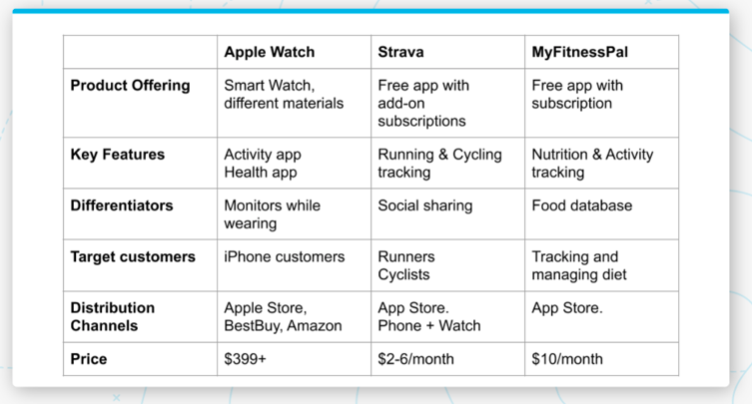
3. Minimum Viable Product
MVP
An MVP has just enough features to get early adopters excited, and after you launch an MVP you’ll get lots of feedback that will help you understand if you have product market fit and what areas you should invest in next.
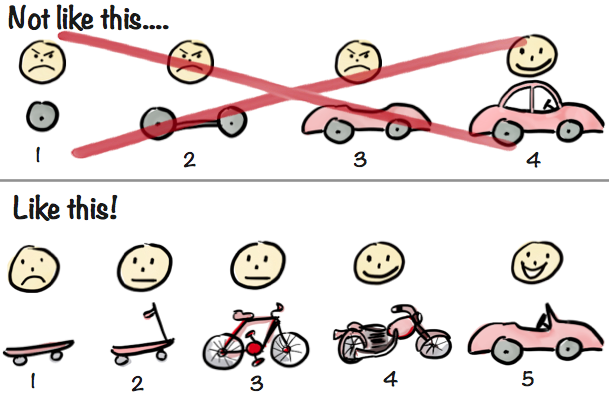
Even though it is called an MVP it doesn’t mean the product should feel incomplete, unfinished or unpolished. It’s still very important to deliver a high-quality experience to users, and investing in good design and reliability. If you don’t start on good footing users will abandon it before you have the chance to build out more functionality.
Think of your MVP as a starting point for your product to grow into something more.
Benefits of MVPs
An MVP allows you to get the product to market fast or much faster than if you built out the entire feature set. By launching an early version of your product you’ll start to get signals if you have product market fit. and additionally, you’ll get feedback from users that can help to inform what you should do next.
- Get product to market fast
- Get feedback from real users
- Fail fast
MVPs allow you to fail fast and learn because this is an iterative approach, you can respond to incoming feedback and course-correct as necessary orin worst-case, abandon the product without having spent a lot of effort and time to build out the full product.
Creating an MVP
Use the business model canvas to help define your MVP by specifically looking at customers, the value proposition, channels that you have, and the relationship that you want to build with customers. This will help you to identify what’s the right problem to solve and the right value proposition to create for your customers early on. You need to understand who are your users and you need to give them a reason to use your product.
- Start with the business model canvas
- Weight against competing solutions
- Make sure it’s aligned to business objectives
- Translate to requirements
- Identify KPIs
Once you’ve formed the basis of your MVP you’ll want to compare it to other solutions in the market. Is it the same? How is it different? Why would a user choose it over a competing product? You’ll want to make sure that you have a compelling answer here. Then you’ll need to make sure that the MVP is aligned with the business objectives. Do you have revenue targets? Do you need to launch by a certain date? Are you trying to attract new users? You need to make sure that your MVP is helping to meet business objectives.
Once you’ve done all of that, now it’s time o break down the MVP into requirements. This is what will make it actionable for the team to execute against, and this is where you’re going to start to detail what the product does and doesn’t do in more detail. Using this means writing a PRD (Product Requirements Document).
An MVP by definition is only must-haves
Finally you’ll want to identify KPI’s. This will help you understand how you product is doing overall.
4. KPIs
Key Performance Indicators
KPIs measure the performance of your product. They help you to understand how well your product is working or isn’t working as well as how changes that you’re making to your product move the needle.
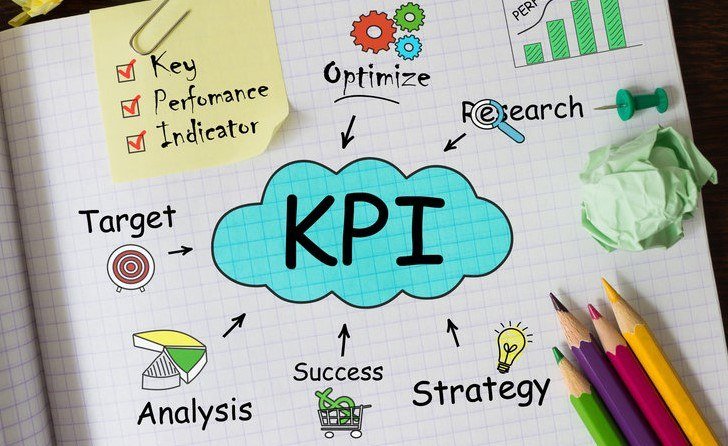
There are several different types of KPIs. You can have business KPIs which measure how you’r doing against business goals. You can have product KPIs, which measure how the product is being used and how the product is helping users meet their goals.
- Business
- Product
- Quality
- Development
You can have quality KPIs, which measure how often users encounter issues or problems with the product. You can have development KPIs, which measure how well the team is executing when it comes to building and delivering the product.
How to pick KPIs?
Don’t measure everything. There’s lots of data and lots of things you can measure but you need to be super selective when you’re picking KPIs. It’s better to have a few actionable KPIs rather than a ton of KPIs that are difficult to understand. If you have too many KPIs, you’ll waste a lot of time trying to understand what they all mean and what’s causing them to change over time.
The best KPIs capture user, product and business goals. If one of your business goals is relate to revenue then revenue will likely be one of your KPIs. User goals are related to the problem that your product is trying to solve. Product goals are generally related to the usage of your product, usually around engagement.
- Don’t measure everything
- Align user, product, and business goals
- Make sure KPIs are measurable
- User percentages and time periods when setting goals
Make sure that the KPIs identified are measurable and that the team agrees on how those KPIs will be measured. This might seem simple and straightforward, but as you start digging into the data, theres a lot more complexity.
It’s often helpful to set goals based on achieving things, based on percentages with a certain time-frame when you’re talking about KPIs.
Zoom KPIs
Business
- ARPU
- Conversion to subscription
- Churn rate
Product
- Weekly Active Users
- Average number of calls per user per week
- Average time to first call
Quality
- % of calls delivery in HD – as this is a key value proposition
- Average rating per call – users perspective on how the product is working
- Support contact rate – out of 100 calls how many users need to contact support for help?
Development
- On time delivery – if there are delays what’s the average deviation from the original estimate? Team velocity.
- Outages per month – on average how long do those outages last?
Example KPIs for a fitness Tracker
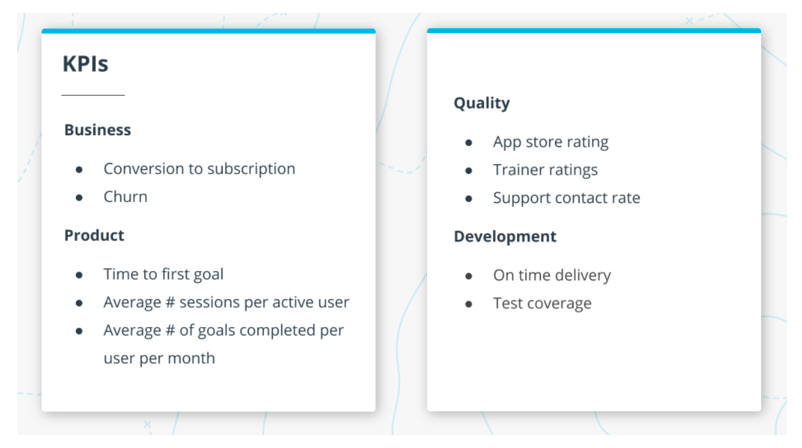
5. Where Product Managers focus during the Product Development Process
Focus on the Development Process
- Identify Problems
- Creating Solutions
- Planning
- Core Team
- UX Design
- Implementation
- Testing
- Launch & Review
Identifying Problems
One of the most important roles of a Product Manager
- Define the problem for the team to solve
- Build a deep understanding of the user, their needs, and the space the product is in
- Conduct user research, market research, or competitive research, to leveraging existing product insights and data, or other inputs to create hypothesis and text them.
Creating Solutions
Once armed with an understanding of the problem, space and opportunity
- Build strategies for how to solve the problem through the creation of your product
- What the product does – high level overview of the product or feature and what it does
- Mapped to goals, objectives and KPIs
Planning
How to tackle the remaining work – by working closely with design and engineering to understand how much time is needed to both design and build the product. Program Managers can help to drive this conversation.
- Timelines
- Splitting into milestones – for larger products that will take a lot of time to ship (milestones will have related tasks that could be launched stand alone. Then layer on additional functionality and milestones on top until you get to the fully developed product.)
Core Team
Helpful to identify key points of contact across engineering and design that will work with you as a Product Manager.
- Product Manager
- 1 Designer
- 1 iOs Engineer
- 1 Android Engineer
- 1 Backend Engineer
This can vary as it is highly specific to a project.
UX Design
During UX Design, it’s important to work closely with design whilst they’re building out mocks and the spec for the user experience. The Product Manager provides context that can help inform design decisions. And help guide design decisions using your product intuition, but you might not always be correct.
- Mocks and specs
- Review and provide context
- Usability testing – large changes in the UX through usability testing to surface any issues users might run into with the product before development starts (not always possible otherwise use A to B testing)
Implementation
Once mocks have been finalised and the spec has been handed off to the engineering team, it’s time for implementation to begin. Check to see if the engineers understand all the requirements and if there’s anything that needs more definition or there is anything that is unclear.
- Are requirements clear?
- What edge cases (a problem or situation that occurs only at an extreme operating parameter) haven’t we thought of yet?
- Are we on track? (during the build process check in for regular status updates)
- Surface any roadblocks the team is running into and help to remove them (partner with a program manager to keep a pulse on how things are going)
Testing
Testing and validating that everything works correctly is an important final step. Work with the QA (quality assurance). Product Managers should go through their own product, report any bugs and make sure it meets the correct standards
- Review the test plan – outlines different scenarios that should be tested
- Steps to be taken, and the expected behaviour
- Does it work?
- What needs to be fixed?
Launch
For small launches, they might go out silently. For large launches, there will likely be some type of marketing and PR – update on website to more comprehensive launch event with press.
- Silent launch
- Blog post, website update, social media posts
- Big announce
For launches that have more risk, these might be phased over a few days or weeks. This gives you the chance to review data and make sure that there’s no negative impact on metrics. After the launch it’s really important to review how things went:
- Changes to key metrics
- User sentiment
- Teams feedback on the launch
- Impact
- What did we learn? What to do differently next time? (helpful in preventing mistakes next time)
Multiple Products
You’ll likely be working on multiple products at the same time and those products will likely be at different phases.
6. Who do Product Managers work with?
Product Managers work with EVERYONE!
Product Managers are in the super unique position that they have seen the product throughout the entire product development cycle. The product managers own a piece of the value stream that includes development and users.
They’re in tune with the challenges the product is facing across different functions and there’s no one else on the team that has this level of end-to-end visibility. Product Managers act as a central hub and they help the larger team to connect the dots.
Partners Product Managers work with:
User Researchers
Role:
- Help to discover key user insights and behaviours
- Help answer important questions about assumptions, business model and product
- Perform usability tests with users to make sure the product is understood, solving a need and can be used without any issues.
Interactions:
- Align on research priorities and questions to answer
- Share research findings
- Participate in research together and see things first hand
Design
Role:
- Design what the product should look like
- Design how users should be able to interact with the product
- Make sure we’re solving the right problems for users
Interactions:
- Align on problem definition and scope
- Review PRD (Product Requirement Doc) and mocks
- Compromise on ideal design solution vs technical limitations or timeline pressure
Engineering
Role:
- Build the product
- Maintain the product
- Solve hard problems
Interactions:
- Review requirements, PRD, and mocks
- Discuss feasibility and timelines
- Create a plan for tackling technical debt that’s built up over time
Technical Program Managers (TPM) & Program Managers (PgM)
Super Critical Role:
Interactions:
- Project Management – productive and getting work done
- Report status of projects
- Keep a team on schedule – pulse of what is going on
- Flag risks and schedule slips
- Go through prioritisation exercises
- Discuss timelines and status updates
- Review the product roadmap together
Product Managers (PM)
- Understand the user, the problem, and the market
- Creating a roadmap of what needs to be solved and what needs to be built
Acting Program Manager (PM)
- Understanding the team, the organisation, and how to get things done
- Execute against the roadmap
Program Managers (PgM)
- Understanding the team, the organisation, and how to get things done
- Increasing efficiency, resourcing, and reducing risk through repeatable processes
- Execute against the roadmap the PM built
- More generalised
Technical Program Managers (TPM)
- More involved in all the technical details of software developments
- Previously software engineers
7. Onboarding a new PM
Onboarding
When you join a new team or company, it can take awhile to ramp up. To get started on a good path, here are the things that I would try to do during my first few weeks on a new team:
Company
1. What the company does
2. How the company makes money
3. Short term goals and objectives
4. Long term goals and objectives
5. Current projects in flight
People
1. My line manager
2. My line manager’s manager
3. Other PMs
4. Design partner
5. Research partner
6. Eng partner
7. TPM partner
8. QA partner
9. Data Science
10. Marketing
11. PR
12. Sales
13. Support
14. Legal & Privacy
15. Policy
16. Ops
Product Experience
1. Check out the product’s website
2. Review the app store listing
3. Use the product
4. Journal of my experience using it
5. Questions that I have about why it is the way it is
6. List of issues that I encountered while using the product
7. Get help for the product
8. Review the support site
9. Reach out to customer support for help with an issue
10. Use competitor products
11. Compare similarities and differences
Other
1. Process
2. Learn the process for how to get things done
3. What needs to be reviewed
4. What requires approval
5. Shadow support and listen to customer calls
There will be lots to learn! But even while you are ramping up, you can still provide value to the team by providing a fresh perspective on your experience using the product and the issues you ran into. And make sure to ask lots of questions!
8. Identify Requirements
Identifying requirements is a critical Product Manager role.
Once a problem has been identified as something worth solving it’s time to identify requirements.
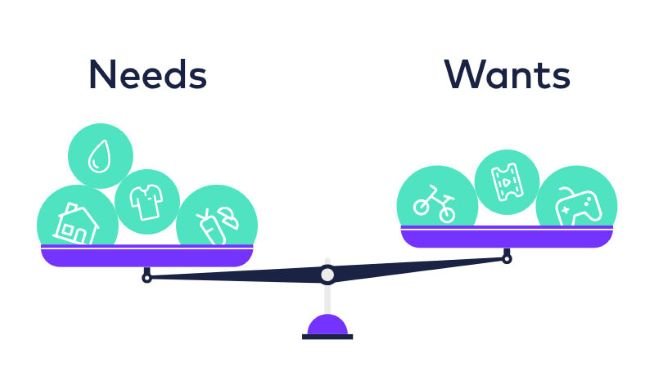
Identifying requirements involves answering questions about what the product should or should not do. This is sometimes referred to as requirements gathering, but it’s much more active that just gathering requirements. The best PM’s will understand the context behind each requirement. Product Managers write requirements in PRDs.
Identifying Requirements
Can happen through a number of channels.
- Research – online research into the space, research the teams collected, more exhaustive market and user research like side-by-side product comparisons or longitudinal studies (looking at variables over a long period of time)
- User interviews – helps to build empathy so you can put yourself in the users shoes
- Stakeholder interviews – interview people at the company to get a better understanding of the business objectives or requirements that might come from marketing or legal (privacy)
- Prototyping – forces you to connect all the dots – you might realise your missing a screen or that there’s a critical interaction missing
- More…
